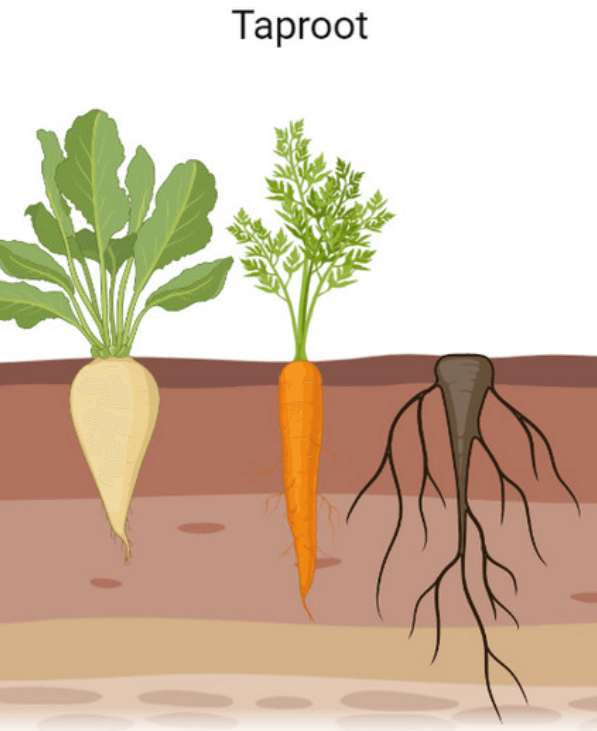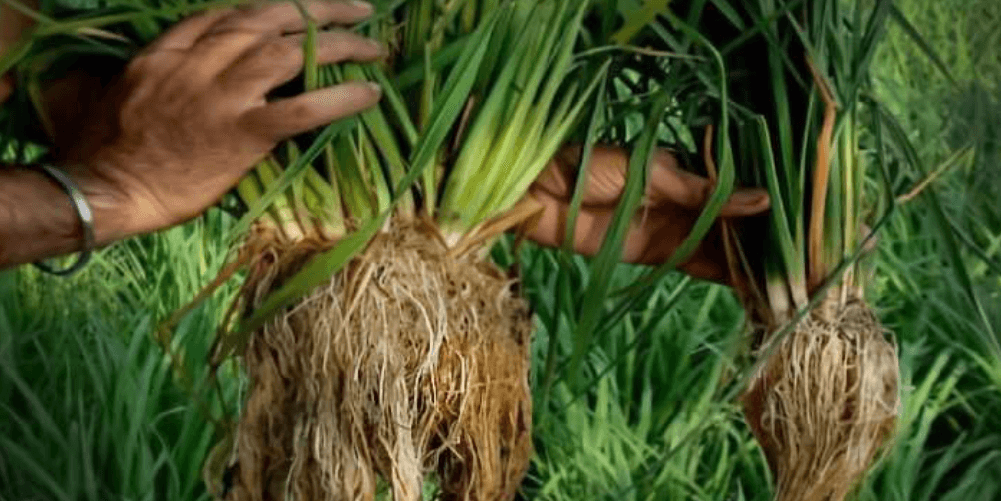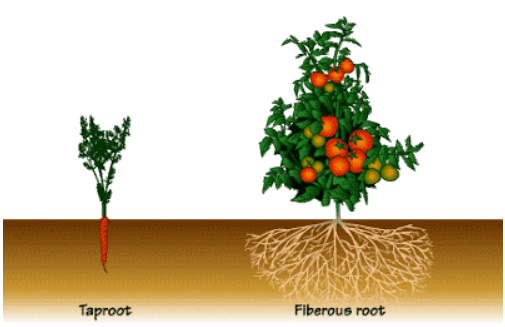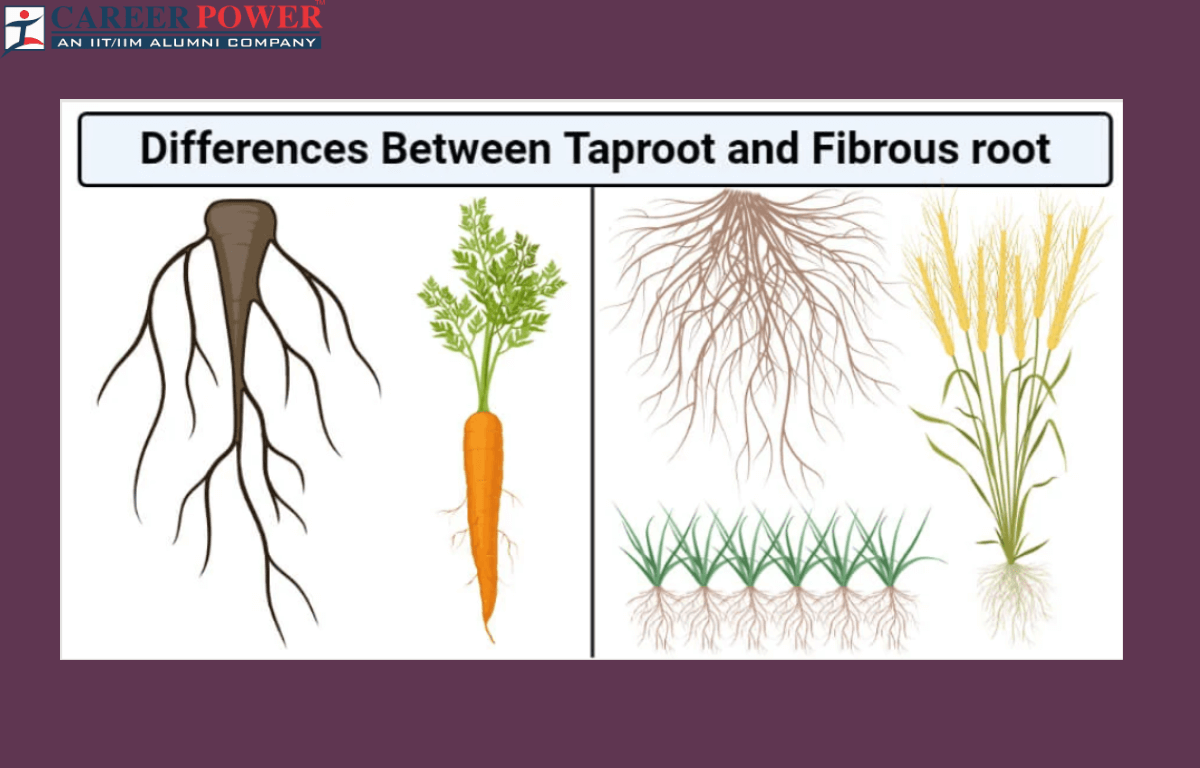Roots are essential plant structures that anchor plants in the soil and absorb water and nutrients. They grow underground, originating from the plant’s base. The two main types of roots are taproots and fibrous roots. Taproots have a central, thick root that goes deep, while Fibrous roots form a dense network of thin roots spreading horizontally. Both types of roots play crucial roles in plant stability and nutrient uptake, contributing to overall plant health. The specific root type varies among plant species, adapting to their environments and growth patterns.
Taproots and Fibrous Roots
Taproots and fibrous roots are the two main types of Root Systems in plants. Taproots consist of a single, main root that grows deep into the soil, providing stability and storage for nutrients. Examples include carrots and radishes. On the other hand, fibrous roots form a dense network of thin roots that spread out near the soil surface. They are adept at absorbing water and nutrients. Grasses and many other monocots often have fibrous root systems.
What are Taproots?
Taproots are primary roots that grow vertically downward from a plant’s seed. In simple terms, they’re like the plant’s anchor. Picture a carrot: the main, thick part that extends into the soil is the taproot. This root system helps plants access water and nutrients deep in the ground, providing stability and support. Unlike fibrous roots that spread horizontally, taproots go deep into the soil. Their role is crucial during droughts, as they can reach water reserves on the earth. Examples of plants with taproots include carrots, radishes, and dandelions. Overall, taproots play a vital role in a plant’s survival by facilitating nutrient absorption and securing it firmly in the ground.

What are Fibrous Roots?
Fibrous roots are thin, hair-like structures that spread out in a network just below the soil surface. Unlike a single, thick root, they don’t penetrate deeply. These roots enhance a plant’s ability to absorb water and nutrients by exploring a larger soil area. Fibrous root systems provide stability to the plant and prevent Soil Erosion. Grasses, for example, commonly have fibrous roots. Their extensive network helps anchor the plant securely and efficiently extract resources from the soil.

Difference Between Taproots and Fibrous Roots
The key distinction lies in the structure: taproots have a main, central root, while fibrous roots form a network of fine roots. Here we have discussed a few points that highlight the difference between taproots and fibrous roots.

| Difference Between Taproots and Fibrous Roots | ||
| Characteristics | Taproots | Fibrous Roots |
| Structure | In taproots the main root is prominent and thicker, growing vertically downward. | Fibrous roots have numerous thin roots that develop from the base of the stem, forming a dense network. |
| Length | Taproots tend to grow longer vertically. | Fibrous roots typically spread out horizontally, covering a wider area. |
| Branching | Taproots have limited branching, with a central, dominant root. | Fibrous roots have extensive branching, creating a mat-like structure. |
| Storage | Taproots often store water and nutrients for the plants. | Fibrous roots are primarily for anchorage and absorption, with less emphasis on storage. |
| Examples | Examples of taproots include carrots, radishes, and dandelions. | Examples of fibrous roots include grasses, wheat, and onions. |
| Adaptability | Taproots are well-suited for plants in dry environments. | Fibrous roots are efficient in nutrient-rich soils and help prevent soil erosion. |
| Regeneration | Taproots can regenerate a new plant if the main root is intact. | Fibrous roots typically propagate through vegetative means like rhizomes or stolons. |
| Harvesting | Taproots are easier to harvest due to their single, substantial root. | Harvesting Fibrous roots can be more challenging due to the entangled network. |
| Life Cycle | Taproots are common in biennial and perennial plants. | Fibrous roots are often found in annual annual plants and grasses. |
| Aeration of Soil | Taproots can create channels in the soil, improving aeration. | Fibrous roots form a dense mat that helps prevent soil erosion but may limit aeration compared to taproots. |
Similarities Between Taproots and Fibrous Roots
Both Taproots and Fibrous roots are types of plants that play crucial roles in anchoring plants and absorbing water and nutrients. Here we have mentioned a few points that highlight the similarities between taproots and fibrous roots.
- Origin: Both taproots and fibrous roots develop from the radicle, the embryonic root of a germinating seed.
- Anchoring: Both types of roots anchor the plant in the soil, providing stability and support.
- Absorption: Both taproots and fibrous roots are responsible for absorbing water and nutrients from the soil.
- Transportation: They serve as conduits for transporting water and nutrients from the soil to other parts of the plants.
- Vitality: Essential for the overall health and survival of plants, taproots, and fibrous roots contribute to the plant’s well-being.



 50 Vegetables Name for Kids in English a...
50 Vegetables Name for Kids in English a...
 Food Chain: Definition, Types, Examples,...
Food Chain: Definition, Types, Examples,...
 Human Respiratory System: Definition, Di...
Human Respiratory System: Definition, Di...













